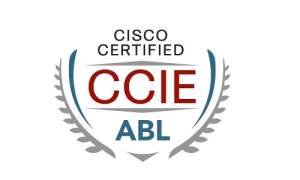AnsibleFest NYC TIckets Now on Sale
We are excited to announce the date for AnsibleFest NYC 2015
When: June 4th
Where: Conrad Hotel NYC - 102 North End Ave, New York, NY 10282
AnsibleFest is a day-long conference bringing together Ansible users, developers and industry partners to share best-practices, case studies and Ansible news. If you are a developer, sysadmin, operations director or devops practioner, AnsibleFest is for you.
Past speakers have included Twitter, Google, Rackspace, EdX, HP, Twilio, Cumulus Networks, Telescope.tv and many more - as well as members of the Ansible Team.
SPECIAL OFFER: Buy an Ansible Tower Starter Kit and get 4 free tickets. Simply enter the promo code festnyc at checkout. BUY NOW
If you are interested in speaking, please contact [email protected]
If you are interested in sponsoring, please email [email protected] for details
Be sure to follow us on Twitter to stay informed of all of the AnsibleFest news. We'll be announcing some special surprises in the weeks leading up to the event.
Cisco Introduces Two New Cisco CCIE Logos

Thanks to my contacts in Cisco PR I’m really excited to be able to share the news that Cisco is introducing two new CCIE Logos for 2015, under the title of “CCIE ABL”. If you’re wondering what “ABL” is, it’s not another specialization track, but rather it signifies progress towards the ultimate goal of a CCIE number.
Phillip A. Prull is the Senior VP with the responsibility to oversee the valuable CCIE® brand for Cisco, and he explained to me why Cisco felt that they needed an additional logo:
“One of the things we recognized was that many engineers were working for many months – even years – towards passing our rigorous CCIE® lab exam, but until they finally achieved that success, many of them told us that they felt unable to demonstrate to potential employers that they had made progress towards that goal. In response, we have created a new logo – the Cisco CCIE® ABL™.
Beginning in April 2015, any candidate who has passed a CCIE qualification exam (aka the “written”) will be able to download the new CCIE® ABL™ logo from our Certification Tracking System, and use it on their resumés and business cards, subject to Continue reading
Ethernet over Fibre Channel
Since the 80’s, Ethernet has dominated the networking world. The LAN, the WAN, and the MAN are all now dominated by Ethernet links. FIDDI, HIPPI, ATM, Frame Relay, they’ve all gone by the wayside. But there is one protocol that has stuck around to run alongside Ethernet, and that’s Fibre Channel. While Fibre Channel has mostly sat in the shadow of Ethernet, relegated to only storage traffic, it’s now poised to overtake Ethernet in the battle for the LAN. And the way that Fibre Channel is taking on Ethernet is with Ethernet over Fibre Channel.
Suck it, Metcalfe
While Ethernet has enjoyed tremendous popularity, it has several (debilitating) limitations. For one, forwarding is haunted the possibility of a loop, and Spanning Tree Protocol is required to keep a watchful eye. Unfortunately, STP is almost as bad as a loop, with the ample opportunity for misconfigurations (rouge root bridges) and other shenanigans. TRILL, a Layer 2 overlay for Ethernet that allows multi-pathing, hasn’t found its way into a commercial product yet, and its derivatives (FabricPath from Cisco and VCS from Brocade) haven’t seen much in the way of adoption.
Rathern than pile fix upon fix on Ethernet, SAN administrators (known for Continue reading
F5 Data Groups, Wildcards and tmsh
Just a quick note about a problem I ran into with adding data groups to an F5 system using tmsh. I wanted to add a string data group containing a list of URIs mapping to other URIs. This was for use in an iRule that will redirect these URIs.
So I thought that this tmsh script would do the trick:
modify ltm data-group redir_uris records add {"/first-uri" { data "/new-uri"}}
modify ltm data-group redir_uris records add {"/second-uri" { data "/new-uri"}}
Every time I tried it, I got this result:
Syntax Error: the "create" command does not accept wildcard configuration identifiers
Hmm. But I don’t have any wildcards. So what’s the problem? I couldn’t figure it out at the time, and ended up having to resort to manually entering the data group via the web interface. A bit slow, but luckily it was only around 20 entries.
Today I found out what was going wrong: SOL12999: “Data group records beginning with a slash character cannot be added using tmsh.”
Description: You cannot add data group records that begin with a slash ( / ) character to data groups using tmsh.
This issue occurs when all of the following conditions are met:
- You Continue reading
Arista EOS Available on Whitebox Switches
A few months ago Gigamon did the right thing: they figured out that their true value lies not in the hardware boxes, but in the software running on them, and decided to start offering their GigaVUE-OS on whitebox switches.
So far, Arista is the only other networking vendor that figured out it doesn't make sense to resist the tide - Arista EOS is now available on Open Compute Networking whitebox switches.
Update 2015-04-02: If you followed the links in this blog post, you probably figured out that it’s an April Fools’ one. However, that’s not the end of the story…
Read more ...A New Journey Begins
Life is about moving from one journey to the next. Today marks exactly one of those changes. Cisco announced their intent to acquire Embrane, which takes us to the next phase in our journey.
It’s been five exciting years since Marco and I founded Embrane. So many great memories come to mind – but I am even more excited about what we have in front of us.
Joining Cisco gives us the opportunity to continue our journey and participate in one of the most significant shifts in the history of networking: leading the industry to better serve application needs through integrated software-hardware models.
At Embrane, we have demonstrated the ability to build products that accelerate the adoption of more agile models for virtualization and automation of networking capabilities in the data center.
The networking DNA of Cisco and Embrane together drives our common vision for an Application Centric Infrastructure. We both believe that innovation must be evolutionary and enable IT organizations to transition to their future state on their own terms – and with their own timelines. It’s about coexistence of hardware with software and of new with legacy in a way that Continue reading
Detecting advanced threats with user behavior analytics
This vendor-written tech primer has been edited by Network World to eliminate product promotion, but readers should note it will likely favor the submitter’s approach.
Day after day, an employee uses legitimate credentials to access corporate systems, from a company office, during business hours. The system remains secure. But suddenly the same credentials are used after midnight to connect to a database server and run queries that this user has never performed before. Is the system still secure?
Maybe it is. Database administrators have to do maintenance, after all, and maintenance is generally performed after hours. It could be that certain maintenance operations require the execution of new queries. But maybe it isn’t. The user’s credentials could have been compromised and are being used to commit a data breach.
To read this article in full or to leave a comment, please click here

